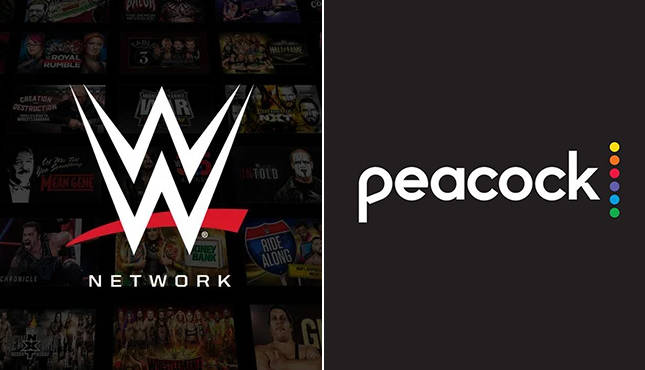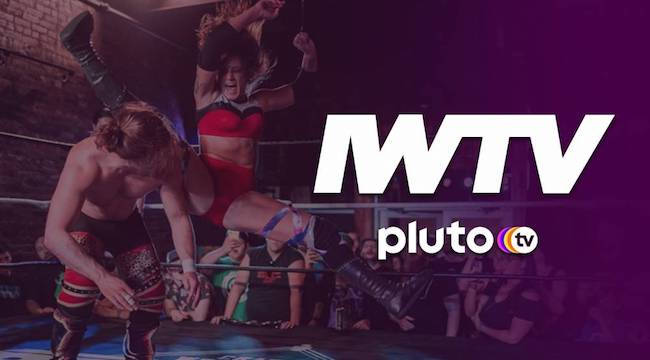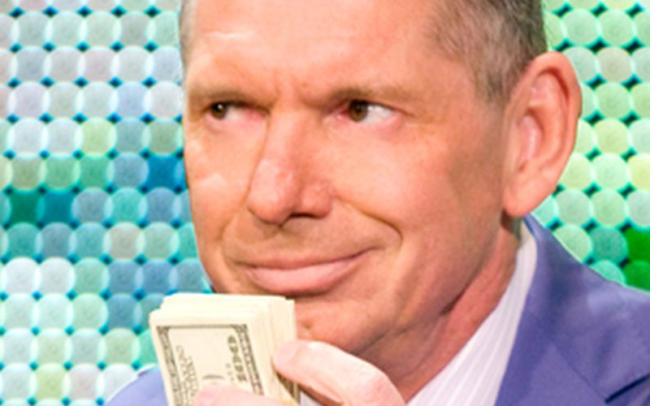wrestling / Columns
WWE’s Long Game Showing With Peacock
 Image Credit: WWE
Image Credit: WWE
Was that the beginnings of an exit plan? The announcement of WWE effectively selling off their Network to NBC rose a lot of eyebrows. Especially when you saw the numbers being attached to the deal. Originally undisclosed, media reports quickly tagged the value of the deal as being worth over $1 billion over five years. That’s $200m a year… for an offering that never got more than 1.3m US-based subscribers in its seven-year history.
So… what gives?
The world is a much different place than it was in 2014, even if we laser-focus in on the world of streaming platforms. Back then, the world of streaming services was much more compact: Netflix, Amazon Instant Video and Hulu were the big dogs, with services like CrunchyRoll servicing niches. It was a simpler day: Hulu was targeted as your “go to” for newer shows, whereas Netflix and what’s now Prime Video were hubs for older shows, with both services inching into the world of creating original content.
For wrestling fans, the launch of the WWE Network in February 2014 was a watershed moment. For $9.99 a month, pretty much anything you wanted WWE-wise was yours – save for the latest episodes of Raw and SmackDown (those would, and still do, need to be consumed on linear TV if you wanted to keep up). It was a stupid value proposition: instead of paying $45 a month for just a pay-per-view, ten bucks gives you that month’s pay-per-view, plus the entire back catalog of WWE *and* WCW pay-per-views? Hardcore fans tripped over themselves to sign up, relishing the prospect of being able to ditch their piles of DVDs and tapes in favour of streaming.
Many believed that WWE reducing their price-of-entry would spark a new boom period. In its first year, the Network had managed to get just under three-quarters of a million subscribers, growing as the service legitimately expanded into Asia, Africa and Europe. Yep, I was one of those who mysteriously “lived in California” after finding a working VPN back in the day, which perhaps tells you that those early “US-only” subscription numbers weren’t completely as you’d think.
Those numbers peaked in the “WrestleMania quarter” in 2018 – the year where Ronda Rousey made her in-ring debut – with WWE announcing a paid subscriber number of 1.8m, split between 1.3m in the US, and just under half a million international. Since then, perhaps boosted by discounted offers, the paid worldwide number has wobbled between 1.5m and 1.6m subscribers, with the Network relatively recently moving to a two-tier model with selected free content and the existing “premium” subscription tier. Despite so much speculation, the “extra premium” top tier of the Network never materialised, with the mooted independent content just being thrown onto the paid-for Network catalog.

Of course, where WWE leads, others eventually have to follow, particularly in the pay-per-view space where it was really only the arrival of AEW (and their lack of a similar all-you-can-eat platform) that made fans consider purchasing old-school wrestling pay-per-views. That stretched into the independents as well, with promotions who were used to selling their shows on an a-la-carte basis also making the switch to a subscription model, whether it be through promotion-specific outlets, or through collectives such as IWTV, HighSpots or FloSlam (hey, remember them?!) All of that led to the fragmentation that a lot of fans of independent wrestling grew increasingly familiar with everytime Pivotshare appeared on their card statements.
Looking back almost five years ago – so not that long after the Network launched – it was estimated that there was upwards of thirty different streaming services, from the WWE Network, to NJPW World, all the way down to local promotions. Yes, for just under three hundred bucks a month, you could gorge yourself on all of the wrestling that legitimately made tape… and that’s before you even touched the murky world of YouTube bootlegs and tape trading. That’s changed a little today – at least away from WWE – with IWTV, HighSpots and WrestleUniverse being the main hubs for content from multiple promotions, but there’s still the proliferation of single-promotion on-demand services, all looking to claim some of the relative crumbs from the streaming service pie.
The fragmentation of wrestling VOD platforms is also being mirrored in the general world of streaming platforms. Content owners want to sell their own content, rather than bundle it off and have Netflix or the like making more money from it… which has led to the arrivals of services like Disney+, Discovery+, BritBox, HBO Max and CBS All Access, with the content creators selling their wares themselves.
All of that has left cord cutters back in the familiar position of now being subscribed to a load of subscription services, much like how they’d signed up to a load of channels that weren’t getting watched on your cable box back in the day. So, what can streaming services do to keep your custom? Diversify. The joke right now is that Peacock is “just for fans of The Office”, and it’s that kind of perception that’s led to NBC making this move – because it’s much easier to buy a block of content to bolster your library, than make it yourself!
Right now, there’s a lot of open questions. How will WWE Network subscribers react to suddenly getting extra content on Peacock? How will they handle the move? What happens if they already have access to Peacock? Will this be the new normal – with the next international TV deals including “let’s move the Network over to your service”?

Some are pointing to the Peacock move as potentially starting a new boom. We’ve heard this before – and while more eyeballs on a product will undoubtedly create more opportunities to win fans over. With guaranteed money from several fronts, there’s never been a time where producing a product that people want to pay to see. Especially now that the WWE Network (in the US) is going to be part of somebody else’s offerings, the line between success and failure has never been wider: you’re unhappy after a bad result or a bad pay-per-view? You’re not as likely to see the #CancelWWENetwork trends of old because there’s probably something on Peacock you want to watch anyway. Raw and SmackDown’s shown their relative immunity to the perception of “poor quality shows” with their recent TV deals, so where’s the incentive for going back to the “old ways”, where matches were built up for weeks and months at a time, leading to you wanting to pay to see a special show?
Long gone are the days where “mainstream” wrestling would be about presenting a story that would lead to you paying money to see the culmination of it: be it for a ticket to a live event, or for a pay-per-view. We’re now firmly in the era with WWE where they throw so much at you, you’ll likely keep the subscription. Don’t like Raw? How about NXT? Not a fan of the current product, then there’s the deep archives of WWE, WCW and ECW pay-per-views, Nitro, Thunder, and some choice cuts from even further back.
But that’s reducing WWE’s output to what it has now become. Content. It’s not to everyone’s tastes, but amid an ever-changing landscape, it’s ticking enough boxes by keeping the hardcore, likely-never-going-to-go-away hardcore fans, those who are only keeping it for the “cheap” pay-per-views, and those who don’t mind plunking down $10 every now and then to binge watch.
Where people once predicted that WWE’s bubble would burst when sports rights stopped being lucrative, we’re now going to get the same predictions about content providers. When all of WWE’s US deals come due, who knows what the lay of the land will be. Will the likes of NBC, CBS, Fox and USA Network have the money to throw at big money TV products – regardless of what the Nielsens look like. Will the content hubs like Peacock still be willing to fork out big money to keep the WWE content?
The current narrative over the quality of WWE’s television product can either be seen as realistic or pessimistic – but while the last sets of TV deals have shown that the metrics of television ratings are likely to be going into the same dustbin that pay-per-view buy rates were thrown into seven years ago, the discussion won’t be going away anytime soon, since there will eventually be a time when that bubble pops. When that happens, the shake-up could well make what we’ve seen with the Network so far look like ripples from a drop landing in a pond.
More Trending Stories
- Note On Possible WWE Storyline & Faction For The Creed Brothers (POSSIBLE SPOILERS)
- Tony Khan Weighs In On Warning From Oklahoma Athletic Commission Over Nyla Rose Match
- Backstage Update on WWE’s Plans for WrestleMania 41, Possible Move to March or May
- Jim Ross Recalls Dustin Rhodes Being Fired From WCW For Not Following No-Blood Policy







